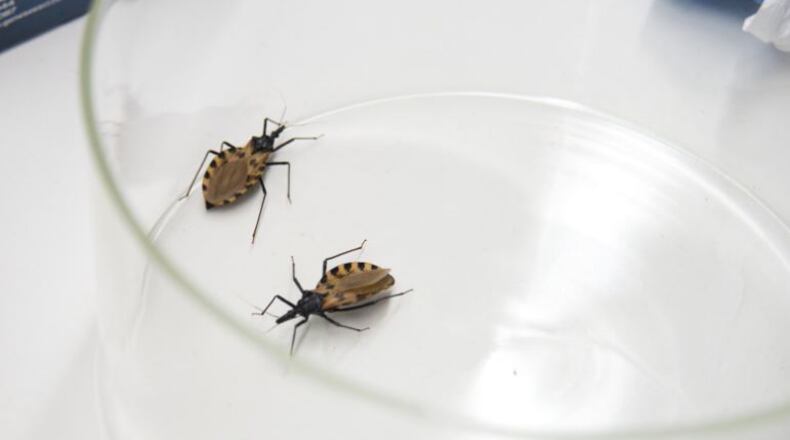The deadly "kissing bugs" that have been making headlines are actually nothing new. In fact, the first such bug reported in the United States was found in Georgia, in 1855, according to the Atlanta-based Centers for Disease Control and Prevention.
Yes, the insects, known as triatomine bugs, feed on the blood of mammals, including humans. Yes, they sometimes carry a parasite in their feces that causes Chagas disease. And yes, Chagas, if left untreated, can cause sudden death, according to the CDC.
But there has never been a reported case of Chagas via triatomine parasite infection in Georgia, the CDC's Dr. Susan Montgomery told The Atlanta Journal-Constitution.
Nationwide, there have been less than 30 total reported cases of Chagas acquired through the bugs, Montgomery said. The first documented case in the U.S. was in 1955, she said.
Of the reported U.S. cases of Chagas from the triatomine parasite, the majority were in Texas, Montgomery said. Other cases have been reported in California, Mississippi and Tennessee.
» 5 things to know about the kissing bug «
Yes, the bugs can be found in Georgia, and, yes, the bugs in the U.S. have a proportionally higher rate of carrying the parasite that causes Chagas, said Montgomery, the epidemiology team lead at the CDC's parasitic diseases branch.
But the species of bug here is more often found in wooded areas than in people's homes, Montgomery said. It often feeds on wildlife.
Even if the bug is carrying the parasite (and not all are), transmission is tricky, according to the CDC: Fecal matter from the bug must be rubbed into a bite wound or a mucous membrane, such as the eye.
They are called the "kissing bug" because they generally bite people on their faces and lips at night.
Montgomery said it's difficult to detect new infections in the U.S. — because most doctors aren't well educated on how to diagnose it, given its rarity, because many people don't realize they've been infected and because symptoms can appear well after infection.
More research needs to be done on where and how often people are infected, Montgomery said.
Some people can experience mild flu-like symptoms in the weeks and months following infection, she said. They will then recover, though they are still infected unless they have sought treatment. If the bug feces entered the eye, the eyelid will swell.
About 30 percent of infected people will develop later symptoms, such as irregular heart beats, an enlarged heart, cardiac arrest, heart failure and digestive problems, according to the CDC.
Montgomery said the species here, which has been found in the country for more than a century, behaves differently than the triatomine bugs found in Central and South America, where Chagas is much more prevalent. The species there is more often found in people's homes, she said.
Worldwide, Chagas kills approximately 12,000 people a year, according to the World Health Organization.
» 5 things to know about the kissing bug «
The triatomine bugs made news recently following ongoing research on Texas' bug population and rates of Chagas via infection.
"We don't want people to panic. They just need to be aware of the possibility of the existence of this disease in the area," one University of Texas professor, who is researching the bugs, told KHOU.
Montgomery advises that people continue to use common sense precautions and avoid touching the bugs with their bare hands.
If you believe you've been infected, check with a medical professional. There are two drugs available to treat Chagas, Mongtgomery said.
To keep the insects away from your home, the CDC also recommends these precautions.
If you think you've found a triatomine bug, the CDC advises not to touch or squash the bug, but to place a container on top of it, slide the bug inside and fill it with rubbing alcohol.
If you do not have rubbing alcohol available, the CDC says to freeze the bug in the container before taking it to a local extension service or university laboratory.
About the Author
The Latest
Featured



